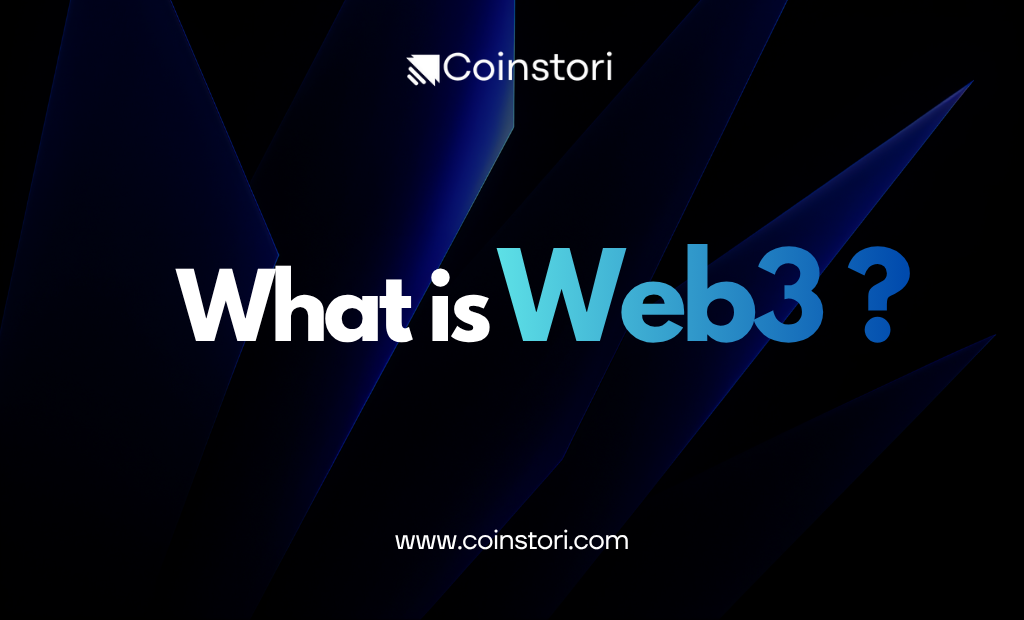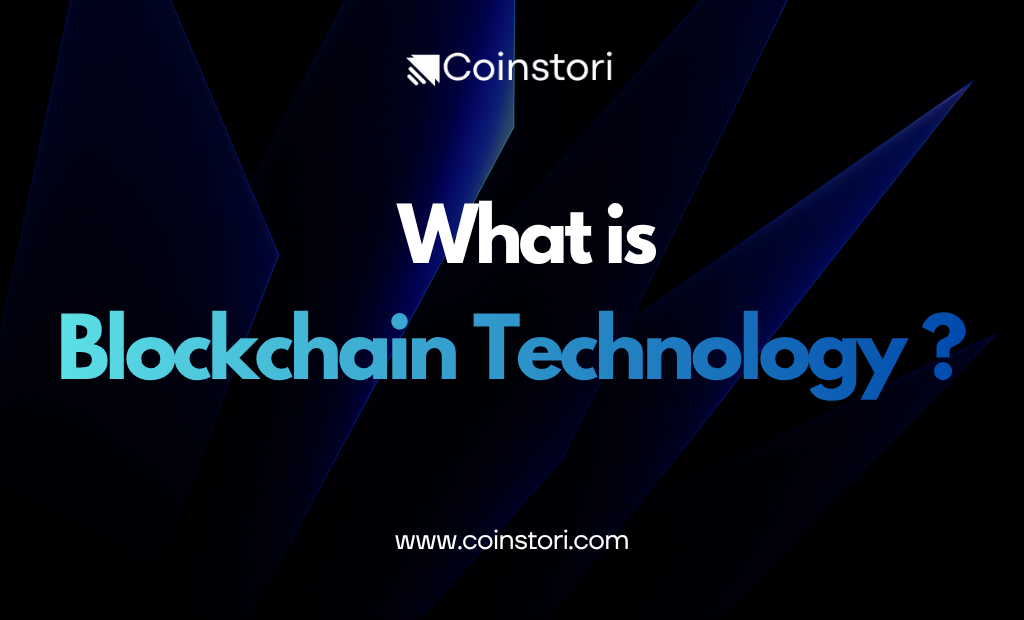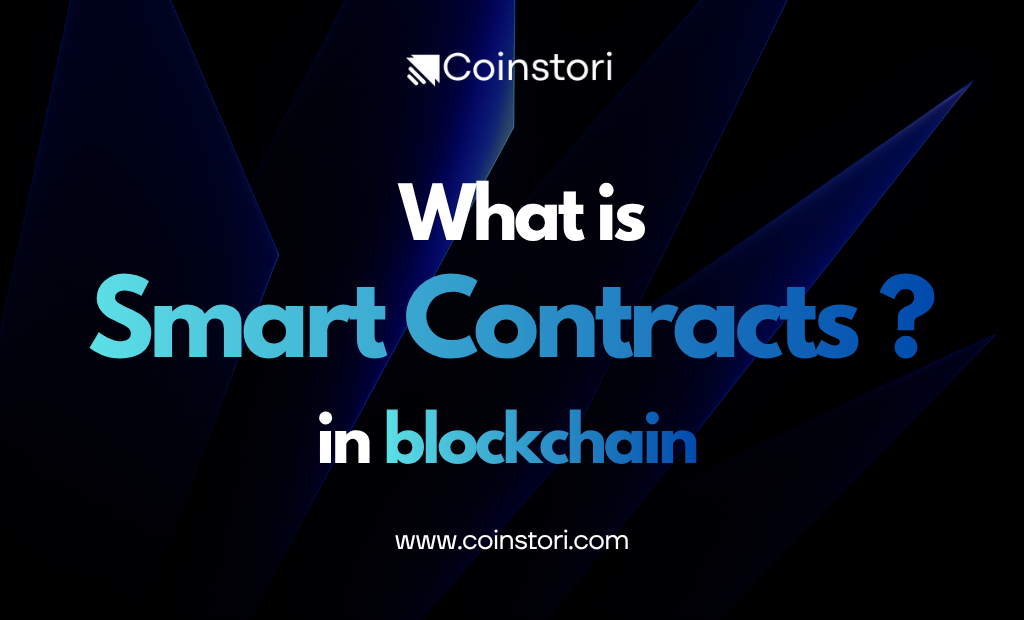Explore what is Web3 really means. From blockchain and smart contracts to real-world case studies like Nike and JPMorgan. Discover how this decentralized Internet reshapes ownership, value, and human connection.

From the dial-up days of Web1 to the algorithmic feeds of Web2, each wave has reshaped how we communicate, consume, and create. But beneath the apps and screens, something bigger is happening — a fundamental rewrite of how the Internet works, who controls it, and who benefits from it.
That new paradigm is Web3, an Internet owned by users, governed by code, and powered by trustless technology.
At CoinStori, we believe Web3 isn’t just about crypto or blockchain, it’s about people reclaiming the Internet through transparency, ownership, and collaboration.
Let’s dive deep into what Web3 really is, how it works, and why it matters to every digital citizen.
What Is Web3?
At its core, Web3 is the next evolution of the Internet — one that replaces centralized control with decentralized systems, giving power back to users instead of corporations.
The term “Web3” was coined in 2014 by Gavin Wood, co-founder of Ethereum, to describe a web powered by blockchain technology, a distributed ledger that enables transparency and trust without intermediaries.
If Web2 was about platforms, Web3 is about protocols.”
From centralized platforms → to open, composable, and interoperable protocols.
If Web2 was owned by companies, Web3 is owned by communities.”
Ownership and value creation shift from corporations to decentralized communities.
Web3 uses open-source code, token-based economies, and cryptographic verification to enable a new Internet model — one where users own their identity, data, and digital assets.
A Simple Analogy
Think of Web2 like living in a giant apartment building run by a few corporations. You can decorate your room, but the landlord owns the space, controls the rules, and profits from your activity.
Web3 is like owning your own home in a decentralized neighborhood — you still connect with others, but you own your space, control your data, and decide how to interact with the ecosystem.
What Are Web1 and Web2?
Before understanding Web3, it’s essential to look back at how the Internet evolved through its earlier versions — Web1 and Web2.
Each stage represented not only new technology but a completely new philosophy about how humans interact online.
Web1 – The Read-Only Internet (1990s–early 2000s)
Web1 was the Internet’s first public form — a static network of websites where users could only read information.
Most content was created by developers or institutions, not individuals.
Pages were simple: lines of text, hyperlinks, and a few low-resolution images.
- Main purpose: Publishing information (like an online newspaper).
- Technology stack: HTML, HTTP, FTP, early web browsers.
- User experience: One-way communication — visitors consumed, not contributed.
- Economy: Virtually none; websites were informational, not interactive.
💡 Think of Web1 as the digital library of the Internet age — vast, but silent.
Web2 – The Read-Write Internet (mid-2000s–today)
The next era, Web2, transformed the Internet into an interactive playground.
Platforms like Facebook, YouTube, Twitter, and Wikipedia empowered users to create, comment, and collaborate.
It was the birth of social media, e-commerce, and cloud computing.
- Main purpose: Connection and participation.
- Technology stack: JavaScript, APIs, databases, cloud servers, mobile apps.
- User experience: Dynamic content, personalization, instant communication.
- Economy: Driven by advertising and data — “If it’s free, you are the product.”
While Web2 democratized creation, it also centralized power.
A handful of tech giants began to control the data, algorithms, and profits generated by billions of users.
💡 You could post your content — but the platform owned your audience.
From Web1 to Web3: The Internet’s Evolution
| Era | Definition | Key Technologies | Ownership | Example Platforms |
|---|---|---|---|---|
| Web1 (1990s–2000s) | “Read-only” Internet — static pages, limited interactivity | HTML HTTP FTP | Publishers and website owners | Yahoo, Netscape, GeoCities |
| Web2 (2004–present) | “Read–Write” Internet — user-generated content, social media | APIs JavaScript Cloud Servers | Centralized corporations | Facebook, YouTube, Twitter, Google |
| Web3 (emerging) | “Read–Write–Own” Internet — decentralized, token-based economy | Blockchain Smart Contracts DApps | Users and communities | Ethereum, OpenSea, Lens, .SWOOSH |
* Web1 democratized access to information.
* Web2 democratized publishing — but centralized profits.
* Web3 aims to democratize ownership, redefining how value flows across the digital world.
The Core Technologies Behind Web3
Web3 is not a single technology — it’s an ecosystem of innovations that work together to decentralize trust.
1. Blockchain: The Foundation of Decentralization
A blockchain is a distributed digital ledger that records transactions across multiple computers (nodes).
Each “block” contains verified data, and once added, it’s nearly impossible to alter — ensuring transparency and immutability.
Why it matters:
- No central server or authority.
- Every transaction is verifiable by anyone.
- Eliminates the need for “trust” in middlemen.
💡 Think of blockchain as the Internet’s new database — public, secure, and community-governed.
2. Smart Contracts: Code as Law
Smart contracts are self-executing agreements that automatically run when certain conditions are met.
They eliminate third parties (like banks or brokers) and ensure transactions happen exactly as coded.
Example:
A smart contract can automatically release payment to an artist once a digital collectible (NFT) is purchased, without needing PayPal or a platform cut.
These contracts underpin DeFi (decentralized finance), NFTs, and DAOs (Decentralized Autonomous Organizations) — the building blocks of Web3 applications.
3. Tokens and Digital Assets: Redefining Value Online
Tokens represent ownership, utility, or governance rights on the blockchain.
They can be:
- Fungible tokens (like ETH or BTC) — interchangeable digital currencies.
- Non-fungible tokens (NFTs) — unique items like art, tickets, or game assets.
- Stablecoins — pegged to fiat currencies for stability.
- Governance tokens — allowing holders to vote on community decisions.
Together, these assets form the economy of Web3 — one where users can earn, trade, or stake value directly.
4. Decentralized Identity (DID)
In Web3, your identity is not tied to an email or a corporation — it’s represented by a wallet address you control.
With DID, users can log in anywhere, carry credentials securely, and decide what information to share.
How Web3 Works in Real Life: Case Studies
Web3 is already reshaping industries far beyond crypto speculation. Let’s explore some real-world examples driving adoption.
1. JPMorgan & DBS Bank – Blockchain in Global Finance
In 2022, JPMorgan Chase and DBS Bank conducted their first tokenized cross-border payment under Project Guardian.
- Used Singaporean dollars and Japanese yen represented as digital tokens.
- Processed on blockchain for instant, transparent settlement.
💰 Outcome: Lower transaction costs, faster processing, and verifiable audit trails — a real-world test of decentralized finance at institutional scale.
2. KKR & Securitize – Tokenizing Private Equity
Global investment giant KKR partnered with Securitize to launch a tokenized private equity fund on Avalanche blockchain.
This move opened access to retail investors who previously couldn’t afford large minimum investments.
📈 Result: Democratization of investment — turning exclusive Wall Street funds into accessible blockchain-based assets.
3. Nike .SWOOSH – Web3 Consumer Empowerment
After acquiring Web3 design studio RTFKT, Nike launched .SWOOSH, a blockchain-powered platform for digital apparel.
- Users can collect, trade, or co-create NFTs tied to Nike products.
- Creators earn royalties on sales.
🎯 Result: Brand loyalty evolves into brand ownership — fans become active participants in the ecosystem.
4. Gaming and Metaverse Integration
Web3 also drives play-to-earn games (like Axie Infinity) and digital worlds (like Decentraland), where virtual assets have real-world value.
Players can truly own in-game assets — a breakthrough from Web2 models where companies own everything.
Web2 vs Web3: The Structural Shift
| Feature | Web2 | Web3 |
|---|---|---|
| Ownership | Platforms own data | Users own assets & data on blockchain |
| Trust | Based on intermediaries | Based on cryptographic proof |
| Business Model | Advertising, data monetization | Token economies, peer-to-peer value |
| Identity | Centralized accounts (Google/Facebook) | Decentralized identity (wallets, DIDs) |
| Governance | Corporate boardrooms | Community DAOs |
| Data Storage | Centralized servers | Distributed ledgers (IPFS, Arweave) |
Opportunities of Web3
- True Ownership: Users control their digital property — from art to identity.
- Economic Inclusion: Anyone with Internet access can participate in token economies.
- Transparency: Public blockchains ensure open verification and accountability.
- Community Power: DAOs enable collective governance and shared rewards.
- New Creative Models: Artists, gamers, and influencers can monetize directly.
Challenges and Risks in web3
While Web3 promises liberation, it’s far from perfect.
1. Regulatory Uncertainty: Governments are still defining how to regulate cryptocurrencies, NFTs, and DAOs. Unclear laws create hesitation for mainstream adoption.
2. User Experience: Managing wallets, gas fees, and private keys remains confusing for non-technical users. Until Web3 becomes as seamless as Web2, adoption will lag.
3. Scalability: Networks like Ethereum have faced congestion and high fees. Layer-2 solutions (Polygon, Arbitrum) are addressing this — but scalability is an ongoing challenge.
4. Security & Scams: Smart contract vulnerabilities and “rug pulls” have caused billions in losses. Education and audit standards must improve to protect users.
5. Environmental Concerns: Proof-of-work blockchains consume significant energy. The shift to Proof-of-Stake (like Ethereum’s upgrade in 2022) helps reduce carbon impact by 99%.
The Future of Web3
Web3 is not a distant dream — it’s evolving daily.
Despite the 2022 crypto downturn, NFT volume, developer activity, and enterprise blockchain adoption continue to rise.
Key trends shaping Web3’s future:
- RWA Tokenization: Turning physical assets (real estate, commodities) into on-chain tokens.
- AI + Web3 Integration: Intelligent agents executing autonomous on-chain actions.
- Interoperability: Seamless connectivity between different blockchains (Polkadot, Cosmos).
- Regulated DeFi: Merging traditional finance with compliant decentralized systems.
- Decentralized Identity: Portable, user-owned credentials becoming the norm.
The coming years will determine how far decentralization can go — but one thing is certain: Web3 has already changed how we think about trust, ownership, and collaboration online.
Conclusion: Reclaiming the Internet’s Soul
Web3 is more than a buzzword — it’s a return to the Internet’s original spirit: open, borderless, and user-owned.
It represents a cultural shift from passive consumption to active participation, from renting space on Big Tech’s platforms to owning digital territory on the blockchain.
At CoinStori, we believe this movement is about connecting innovators, storytellers, and builders — those shaping the decentralized era one block at a time.
FAQ about Web3
What exactly is Web3?
Web3 is a decentralized version of the Internet built on blockchain technology, enabling user ownership of data, assets, and identity.
How does Web3 differ from Web2?
Web2 is centralized around corporations; Web3 is community-driven, open, and transparent.
What technologies make Web3 possible?
Blockchain, smart contracts, decentralized identity systems, and token economies.
Are cryptocurrencies and NFTs part of Web3?
Yes — they are key components of the Web3 ecosystem, representing value and ownership digitally.
What are the risks of Web3?
Regulatory ambiguity, user inexperience, security flaws, and scalability challenges — all being actively improved.
Buy me a croissant 🥐
If this story helped you, a tiny treat keeps the energy (and research) going.


